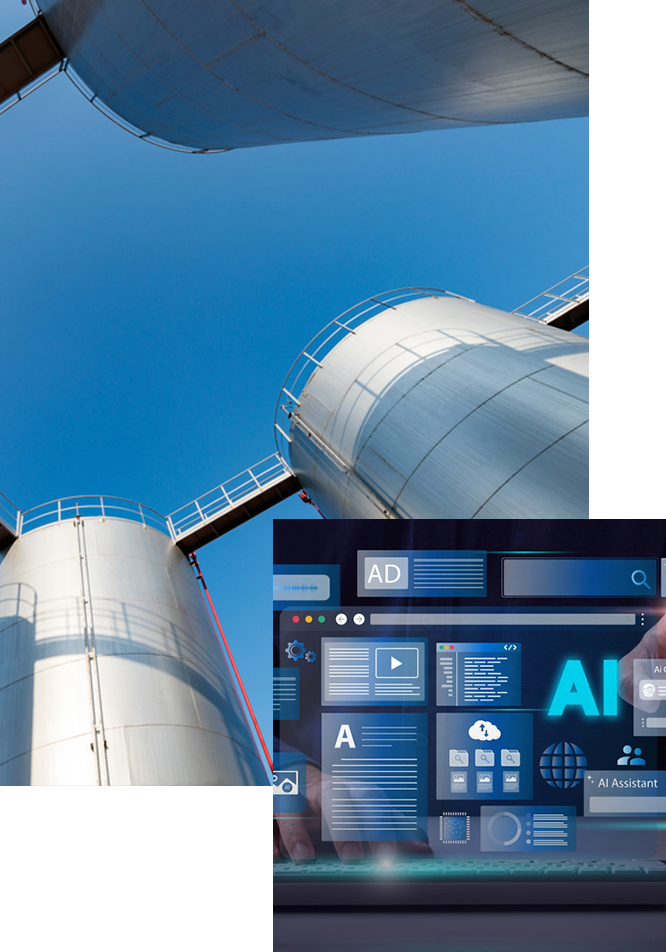Go back
Petronor
Ayesa uses generative AI to create an ‘expert agent’ to support operations at refineries
- Client: Petronor
- Date: 2024
- Location: Spain
- Technologies used/software vendors: Generative AI (GenAI)
Go back
Petronor


With a production capacity of 12 million tonnes per year, Petronor is Spain’s biggest refinery. The site has 945 permanent members of staff and is responsible for creating another 6,200 jobs.
One of the challenges Petronor faces in the catalytic process is that the engineers need to be constantly checking technical data from manufacturers to make adjustments, something that impacts upon the quality of the end product as well as the efficiency of the process.
These routine checks are extremely time-consuming as they involve extensive, highly technical manuals, which makes finding information difficult. Furthermore, the manuals tend to include figures, an issue that GenAI models have been unable to adequately solve so far.
As part of its efforts to make its production plants more efficient and profitable, the company is focusing on solutions based on generative AI. This led it to join Hackia, an initiative launched by its parent company Repsol, which involves teams from across the group as well as technology partners competing to create feasible solutions to real problems it faces.
As part of this programme, Ayesa participated in the Gidabot project, alongside Petronor. The result is an ‘expert agent’ which allows chemical engineers involved in the catalytic process to quickly and easily consult technical documents.
The virtual assistant is capable of simple interactions using natural language by combining generative AI with computer vision models, which are able to provide a solution to the issue of figures.
It also features traditional predictive machine learning models, which allow it to offer additional information by identifying patterns in past data from the refinery. This valuable information on variables, which go beyond the theoretical model of the refinery, means engineers are able to make optimal adjustments to the catalytic process.
Due to their inherent nature, generative AI models often behave in a way we do not want them to or offer solutions that are imprecise, inconsistent or not feasible. However, this project has shown that combining AI models with careful response orchestration can produce more reliable results.
Furthermore, the solution includes traditional machine learning, which allows vast volumes of data to be analysed and complex patterns learnt.
OCR (optical character recognition) and computer vision technology have also been used to allow information in the plants’ technical manuals to be easily located, further increasing the amount of data staff have access to and improving the accuracy of predictions.
The ability to predict catalytic cracking conditions with precision enables the way industrial plants are managed to be transformed, optimising production and reducing operating costs.
The implementation of this solution represents a significant milestone towards the full digitalisation of industry. By harnessing the power of generative AI, companies are able to make more informed decisions, optimise their processes and maximise the efficiency of their operations, something that ultimately allows them to become more competitive and grow.
Our goal is to provide you with the best services for your needs